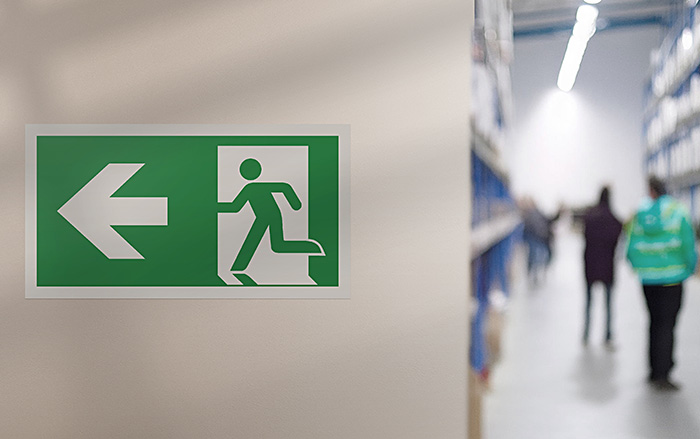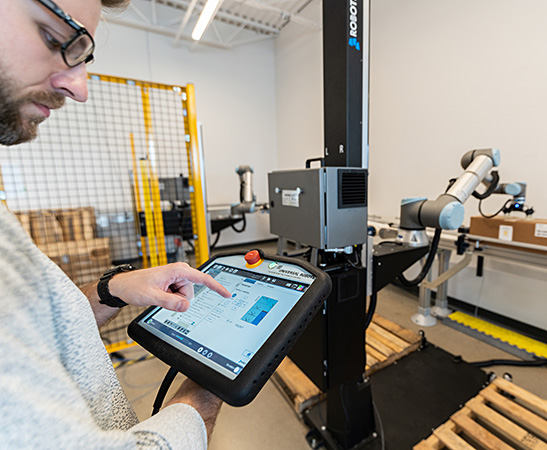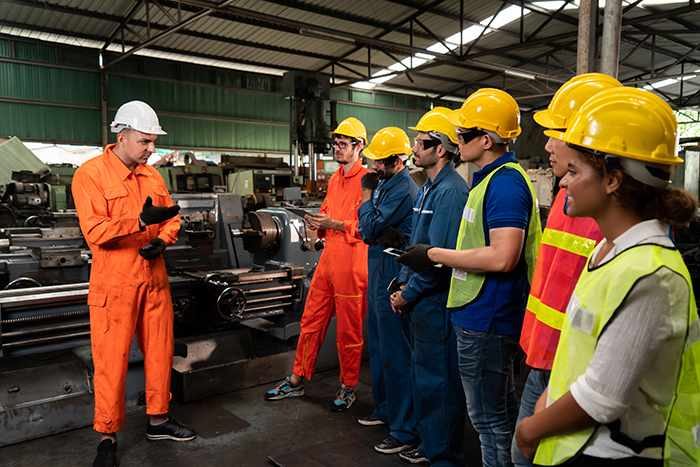Give Me a Reason to Stay
Recruitment and retention go hand-in-hand for warehousing and manufacturing

You’ve seen the statistics about labor shortages over the last few years. The reality for recruiters on the ground is more obvious: there have been plenty of no-shows for job interviews (or for the first day of work). Candidates ghost companies throughout the process. You may have to take down a job posting only to put it right back up when someone quits. Particularly for the roles warehousing and manufacturing companies need to hire, the difficulties are real – and only growing.
So how do you attract and keep the right candidates for your company?
The problem is larger and more complex than churn and HR expenses
People leaving is reality for most companies, and the internal costs are there to see:
- Hiring costs related to advertising, recruiting and attracting employees
- Onboarding costs
- Training and related costs
- Escalating problems with morale and worker satisfaction
These are all tangible costs you’ll pay as people come and go.
The true cost, however, is the reality that as you churn through people, your customers will be affected. Shipments may be later or less accurate. Customers feel it when the order fulfillment system can’t ship on time or can’t ship it right. They are directly impacted by poor quality and service. Instability affects your ability to grow.
Unstable workforces are inherently less reliable than stable ones, so keeping people longer makes your operation stronger and more competitive.
When employment is unstable in an industrial operation, quality suffers. Customers feel the impact because the core of the business – its ability to assemble, ship and process orders – is compromised.
Recruit to retain
Retention and recruitment are the two halves of any staffing plan: the same things you do to attract talent will also retain them for the long haul.
What are some elements that make up an effective plan for both? No single stratagem is a silver bullet. It takes a multi-pronged approach to see a difference—especially in times like these where workers have many options to work at similar jobs.

1. Deploy the right technology for the work
People like cool tools – especially ones that make their jobs easier and reduce drudgery. When it’s fun to work, it’s easier to stay.
In work settings that involve repetitive, boring or difficult tasks, you’ll attract people if you provide technology that helps get the job done. Here are just a few ideas:
- Automated solutions that make a hard job easier or let you move people to more skilled positions and away from monotonous work.
- Ergonomic tools, like vacuum lifters, to make the work safer (a side benefit of equipment like that is that it enables you to hire a greater proportion of the labor pool because the work doesn’t require as much physical strength)
- Powered workbenches that move electronic equipment throughout a work area save workers thousands of steps
- Telescoping conveyors to load cartons directly into trailers, saving those last few feet of manual movement
Anything that improves working conditions makes it easier to keep people in the job. In an order picking operation, you want to avoid someone leaving you for a similar job down the road for a nominal pay increase. Adding technology that helps them perform and makes their lives better is critical in that effort.
A critical factor: plant ergonomics
One aspect of retention for manufacturing and warehousing operations is simple: comfort and ergonomics. People who are more comfortable, less stressed and better positioned to work not only get injured less often: they stay in their jobs longer.
- Better ergonomics can result from simple improvements like ergonomic mats that reduce the impact of standing on concrete all day.
- Slotting work and inventory in the ergonomic “golden zone” helps reduce stress and strains that can cause injuries and reduce retention.
- Adding HVAC, warehouse fans and other simple upgrades to reduce the impact of heat can have dramatic retention impacts.
- Reducing the amount of walking makes people less error-prone and more likely to stay at the job. Picking and assembly jobs should attempt to centralize and reduce time walking around and maximize time focused on the job.
Read more: Warehouse Ergonomics and Productivity: an Inseparable Relationship
2. Create a positive culture

If you follow business thought leadership discussions, you’ve probably seen several takes on culture. One area that deserves your attention is the power of recognition. Research from Gallup suggests that recognition can boost employee engagement, productivity and loyalty, all of which support retention.
When was the last time you thought about your recognition program—or do you have one? It might be time for a tune-up.
You may encounter special considerations in creating a recognition program for the populations that work in your facility. One size doesn’t fit all, and you don’t want your efforts to fall flat—or have the opposite effect you intended.
In this unconventional take on recognition for skilled-labor employees, one HR leader suggests more indirect recognition, because some people of a certain generation in a certain type of role may feel uncomfortable with public praise. The important thing is to target your recognition to your people. Don’t be afraid to back up and change your approach. Employee surveys can help you gauge which direction you’re headed as you implement new culture programs.
Make sure the recognition you create is meaningful and relevant to your people. Many companies create cookie-cutter programs that fall flat. Yours must be tailored to your company culture, your employees and their preferences.
3. Training and development, growth and advancement: “give people a path forward”

Sharon Harrison of the Oklahoma Manufacturing Alliance says that when her organization created a state workforce committee, retention was one of the biggest problems faced by manufacturing leaders.
In response, they created a list of projected and current critical occupations and carefully mapped the skills of those jobs, which led to a map of career progression that employers could use during employee reviews. The resulting program is a Career Pathways tool, and Harrison says it’s helping improve retention for companies who deploy it. People feel more motivated when they can see the path ahead of them.
“Especially Gen Z,” Harrison says. “Gen Z wants to learn.”
If you want to keep your labor force—especially the younger folks—engaged at your company, a learning and development tool that shows career progression can be invaluable.
4. Compensation and benefits
This one’s obvious. Money always matters.
To keep people in your organization, the grass can’t be too much greener on the other side. There are tools you can use to advise you on your salary ranges. But at some point, you might not be able to compete on hourly wage alone, and you’ll need to sweeten the deal with a more comprehensive benefits package.
Cisco-Eagle is a proud ESOP. We’re big believers in what employee ownership can do for a company and the people who build it. The ESOP Association recently commissioned research showing that among workers currently at an ESOP, 88% prefer their current job to their previous non-ESOP job.
It’s not surprising: owning stock in their company allows employees to build wealth even in tough economic times and own a piece of their labor. Many ESOP employees also report feeling valued by their employers, with a deep perception that they have a voice in the company and a stake in the benefits it produces.

Source: Great Game of Business
If your company is not an ESOP, that’s not something you can change tomorrow. It takes planning and lots of professional advice. But employee ownership is just one way to deepen your benefits offerings. Profit sharing, better-than-average paid leave and childcare support are other benefits that create value in the lives of your employees and entice them to stay around.
Stiff competition
You’re in competition with other businesses for customers, but you’re also in competition with other employers for workers. You can’t afford to let your retention plan fall behind. It will take every tool available to express your commitment to your employees. And in the end, that genuine commitment is probably the only thing that will give them a reason to stay.
More resources
- What makes a great company culture
- How Heat Saps Warehouse Productivity, Causes Errors and Reduces Retention
- Retention factors for manufacturing roles
Jessica Haring



